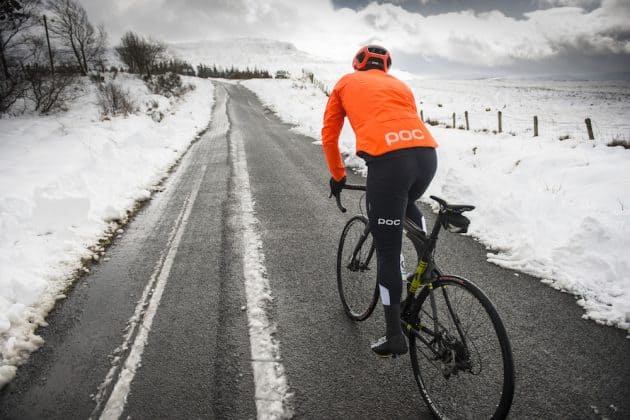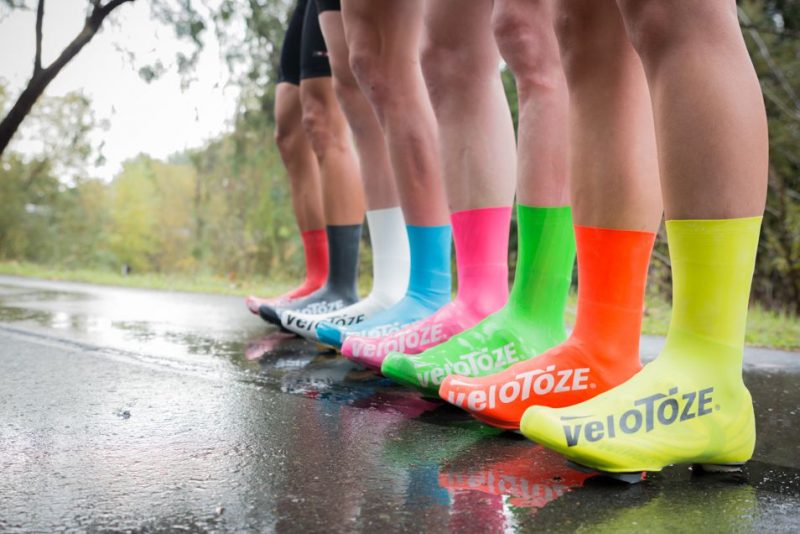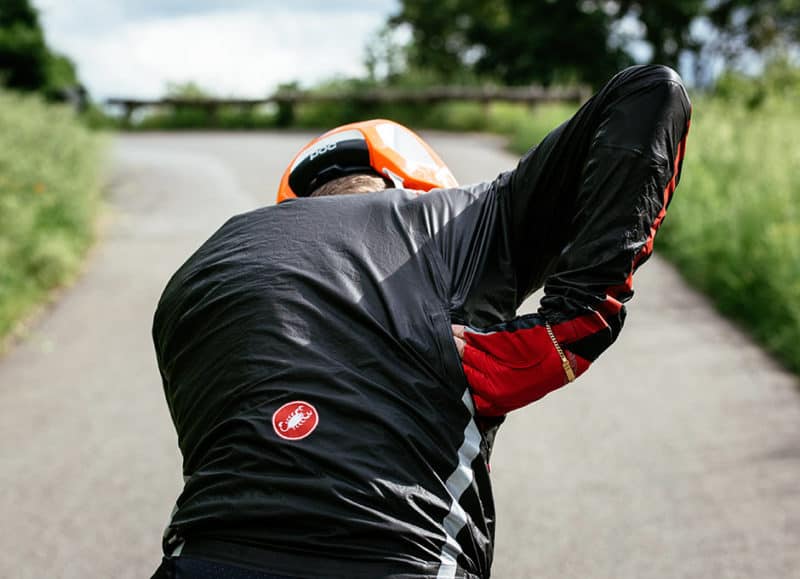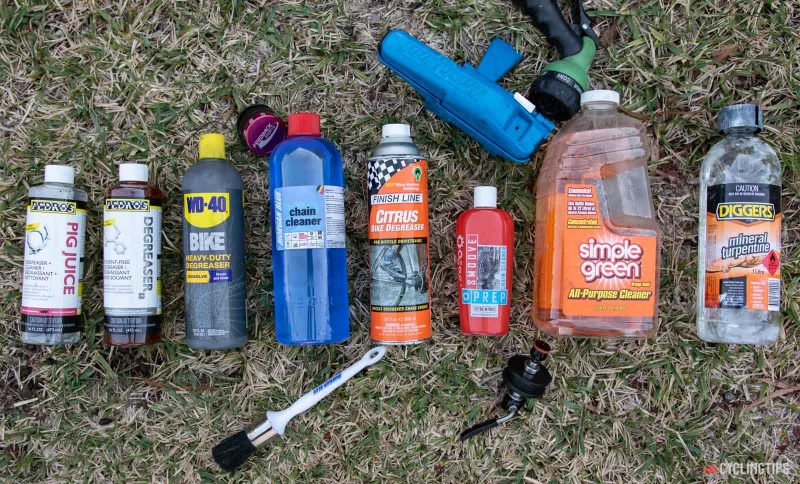Why You Should Check the Weather Forecast Before Each Ride
You can control so many things when it comes to cycling. You pick your bike. You buy your shoes. You choose the route.
But the one thing you have absolutely zero control over is the weather.
So, why do so many cyclists neglect to check the weather before their rides?
By simply checking the weather, cyclists can know what types of clothes they should wear on their ride, but also if they should pack extra water or how the road conditions are going to be. Being religious about checking the weather is about safety and comfort on your rides.
Here’s why you should always check the weather forecast before each ride.
It’s a Good Planning Practice
Cyclists can handle a little bit of drizzling rain on their ride, but when it really starts pouring, it’s a huge safety hazard to keep going. Most often, they need to pull off and pray that there’s some sort of shelter nearby. If not, they’re going to get soaked and it’s going to be a cold, uncomfortable ride home.
It’s quite common for cyclists to get caught in the rain, but all of that can be avoided if you simply pull up a weather app and see what the forecast is showing. While there’s always a chance rain, snow or even a tornado could appear out of nowhere, you have a higher chance of being prepared and not getting caught in the rain by simply checking the weather.
Checking the weather is also a good way of proving yourself as a useful team member if you ride with a group. You can check forecasts for multiple areas in your region to determine if there’s a good spot to get in a ride without worrying about inclement weather.
Get Dressed for the Occasion
As you rack up the miles on a ride, your body is going to heat up. As you coast home, there’s a chance you could get a little chilly.
And, of course, the weather is going to impact all of that.
Checking the weather can ensure that you’re wearing the proper clothing and the right amount of clothing. This is especially true in places like Colorado, where the weather can change at the drop of a hat as you travel up and down Rocky Mountain bike paths.
The weather also tends to be more fluid in the spring and fall. When you check the weather in those seasons, you might see low temperatures for the beginning of your ride, but things could heat up at the end. This allows you to dress appropriately in layers and strip off pieces of your kit as you put on more miles.
Thankfully, most cycling rain jackets can store easily in a jersey pocket or a small pouch that you carry with you.
Keep Yourself Hydrated and Fueled
When you think of checking the weather before a bike ride, you probably only think about if it’s going to rain or how hot or cold it’s going to be so you can dress appropriately.
It’s also important, however, to also check heat indexes to determine how much water and food you need to bring.
Some climates are extremely humid, which can totally zap the energy of a cyclist. It causes you to sweat more, which can lead to dehydration and heat exhaustion.
You’re going to know in the summer months that it’s going to be hot, but by specifically checking the heat index, you can determine if it’s even safe to go outside for a bike ride.
That’s especially true if your normal rides aren’t shaded at all. When temperatures hit 90 to 100 degrees, it can actually be very dangerous. If your rides are tree-covered, a 100-degree day is still hot, but it’s doable.
It’s Not Fun Riding into Headwinds
Most weather apps will include wind speeds and directions in their forecasts, which is super helpful if you’re doing a route that’s consistent in one direction.
While we love cycling, I think everyone can agree that it’s not fun riding into headwinds. And a weather forecast can tell you exactly what the wind is up to!
Thankfully, wind direction, like rain and other precipitation, typically doesn’t last all day. Your favorite weather app can tell you when the wind is expected to die down so you can plan your ride strategically.
Now, if you’re doing an out-and-back, a strong headwind could actually make your workout more exciting and challenging. Cycling into a headwind at the beginning will make you work hard, but if the wind stays consistent, expect a fun, wind-aided trip back home.
Know the Road Conditions
If you have an early morning ride, it’s always a good idea to check the current weather forecast where you’re riding the night before to see if it’s going to rain in the middle of the night. If it does, that could certainly have an impact on your morning ride, especially if your route features any descents.
Road conditions should be taken seriously. If roads are slick and you’re cruising down a steep hill, a wipe out could seriously injure you and wreck your bike.
The short act of checking the weather the night before can at least give you some reason to pause and think if it’s a good idea to ride a particular route.
How to Check the Weather at Your Local Area
EpicRideWeather.com
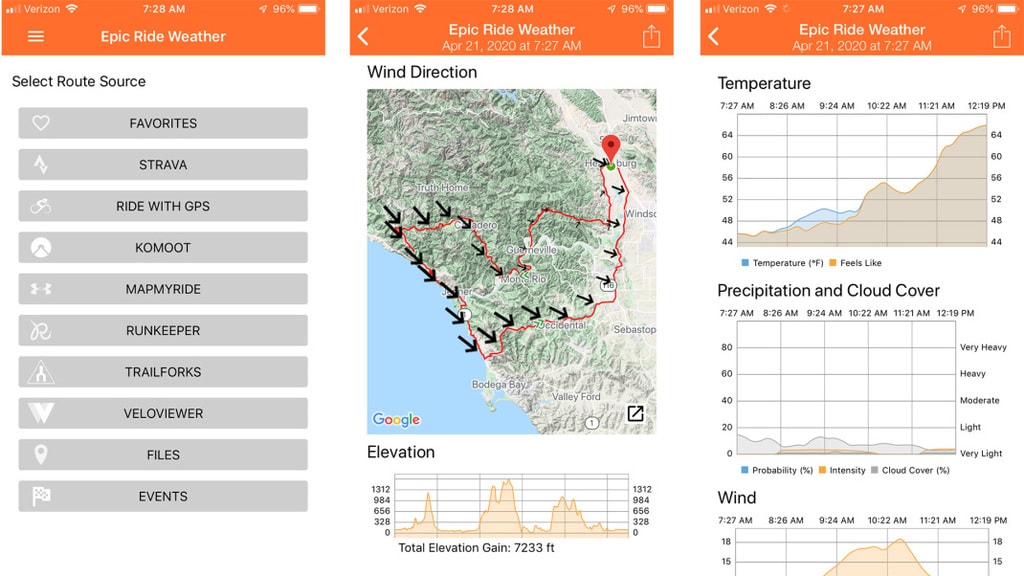
EpicRideWeather.com is a weather app for iOS and Android specifically designed for cyclists. Using the super-accurate and popular Dark Sky API, Epic Ride Weather lets users input their routes and then uses a combination of weather forecasts to let you know if and when you can expect certain weather events.
There’s no need to worry about inputting new routes. Epic Ride Weather lets you upload routes from Strava, Ride With GPS, among other platforms. You can also upload GPX files.
When you click Strava, for example, you’ll see a list of your routes in the app, along with detailed weather reports that can help you decide which one to choose.
One route may be labeled as thoroughly soaked due to rain in the forecast. It also gives you an idea of times to start those routes.
The subscription-based app costs $8.99 for the year or $2.99 per month.
Weather.com

When it comes to weather websites, there’s not one that’s more popular than Weather.com, the online home of the Weather Channel.
The forecasts on Weather.com are easy to read and get extremely detailed, offering you data from multiple sources to give you the most accurate rundown of the day’s weather.
For cyclists, it’s handy to click on a specific hour of the day to see what wind conditions and precipitation chances are showing in the area you plan to ride in.
Accuweather.com
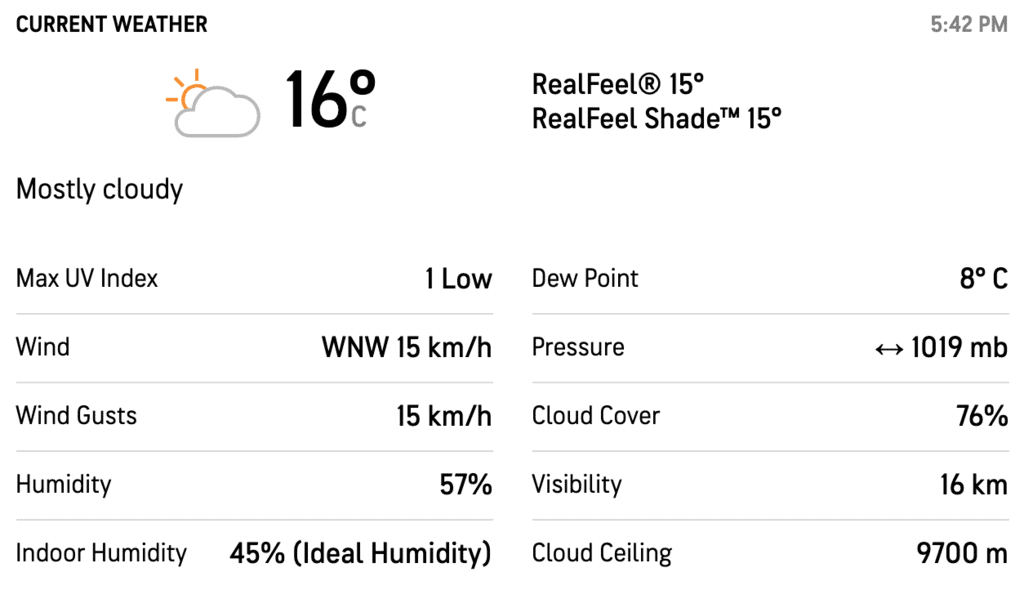
Accuweather has exploded over the past few years as one of the most accurate weather forecasts available.
Hardcore users of the app and website love its minute-by-minute forecasting models, appropriately called, MinuteCast. That feature, plus a super easy-to-use app (that’s also free if you allow ads) makes it an ideal option for cyclists.
Author Recommended Reads

